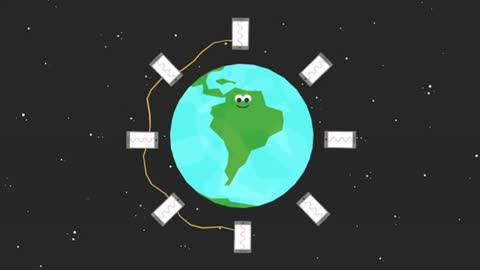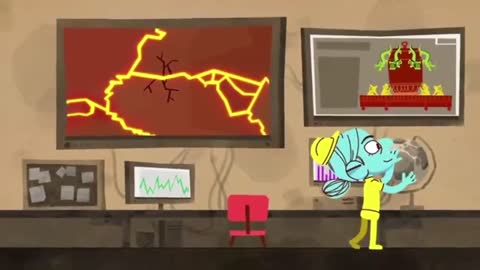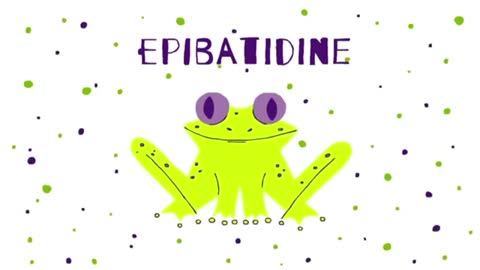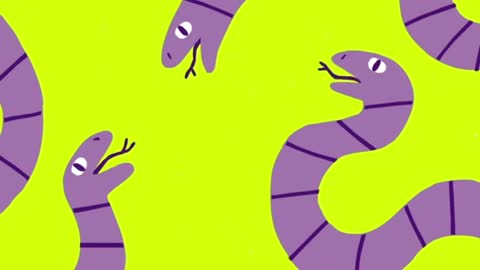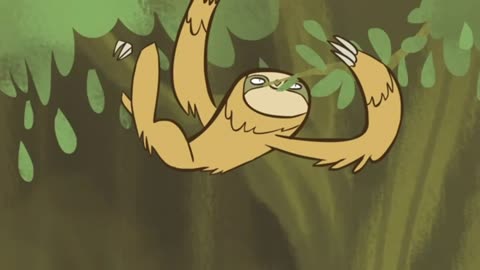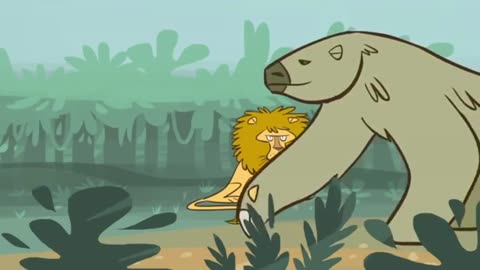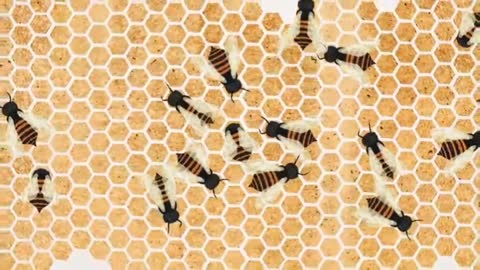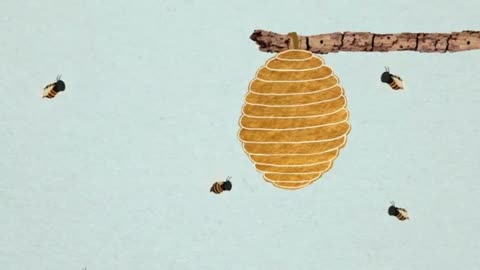Looking deep inside the earth itself can better predict earthquakes
Of course,none of these technologies would be as helpfulas simply looking deep inside the earth itself.With a deeper view we might be able to track and predict large-scale geological changes in real time,possibly saving tens of thousands of lives a year.But for now,these technologies can help us prepare and respond quickly to areas in need–without waiting for directions from a vase.
742
views
Built a vast Network of Radon-Thoron helps us predict earthquakes better
In 2011,just before an earthquake struck the east coast of Japan,nearby researchers recorded surprisingly high concentrations of the radioactive isotope pair: radon and thoron.As stress builds up in the crust right before an earthquake,microfractures allow these gases to escape to the surface.These scientists think that if we built a vast network of radon-thoron detectors in earthquake-prone areas,it could become a promising warning system–potentially predicting quakes a week in advance.
738
views
Earthquakes are hard to predict, even with modern science
Unfortunately, phones might not be ableto provide the advance notice needed to enact safety protocols.But such detailed readings would still be useful for prediction tools like NASA’s Quakesim software,which can use a rigorous blend of geological data to identify regions at risk.However, recent studies indicate the most telling signs of a quake might be invisible to all these sensors.
744
views
We can receive some earthquake warning by mobile phone
Today, many of our most reliable clues come from long-term forecasting,related to when and where earthquakes have previously occurred.At the scale of millennia,this allows us to make predictions about when highly active faults,like the San Andreas,are overdue for a massive earthquake.But due to the many variables involved,this method can only predict very loose timeframes.To predict more imminent events,researchers have investigated the vibrations Earth elicits before a quake.Geologists have long used seismometers to track and map these tiny shifts in the earth’s crust.And today, most smartphones are also capable of recording primary seismic waves.With a network of phones around the globe,scientists could potentially crowdsource a rich,detailed warning system that alerts people to incoming quakes.
743
views
Behavior of the plates is somewhat cyclical
It’s hard enough to monitor these miniscule movements, but the factors that turn shifts into seismic events are far more varied.Different fault lines juxtapose different rocks–some of which are stronger–or weaker–under pressure.Diverse rocks also react differently to friction and high temperatures.Some partially melt, and can release lubricating fluids made of superheated minerals that reduce fault line friction.But some are left dry,prone to dangerous build-ups of pressure.And all these faults are subject to varying gravitational forces,as well as the currents of hot rocks moving throughout Earth’s mantle.So which of these hidden variables should we be analyzing,and how do they fit into our growing prediction toolkit?Because some of these forces occur at largely constant rates,the behavior of the plates is somewhat cyclical.
745
views
In the Earth's crust, small movements eventually trigger earthquakes
Earth’s crust is made from several vast, jagged slabs of rock called tectonic plates,each riding on a hot, partially molten layer of Earth’s mantle.This causes the plates to spread very slowly,at anywhere from 1 to 20 centimeters per year.But these tiny movements are powerful enough to cause deep cracks in the interacting plates.And in unstable zones,the intensifying pressure may ultimately trigger an earthquake.
748
views
In 132 CE,Zhang Heng invented the seismograph
In 132 CE,Chinese polymath Zhang Heng presented the Han court with his latest invention.This large vase, he claimed,could tell them whenever an earthquake occurred in their kingdom–including the direction they should send aid.The court was somewhat skeptical,especially when the device triggered on a seemingly quiet afternoon.But when messengers came for help days later,their doubts turned to gratitude.Today, we no longer rely on pots to identify seismic events,but earthquakes still offer a unique challenge to those trying to track them.
923
views
Not all venomous animals go unhunted
Grasshopper mice resist painful venom from scorpion prey through genetic changes in their nervous systems.Horned lizards readily consume harvester ants,resisting their envenomed sting with specialized blood plasma.And sea slugs eat jellyfish nematocysts,prevent their activation with compounds in their mucus,and repurpose them for their own defenses.The bombardier beetle is no exception:the toads that swallow them can tolerate the caustic spray that Darwin found so distasteful.Most of the beetles are spit up hours later,amazingly alive and well.But how do the toads survive the experience?That is still a mystery.
1.08K
views
Both predators and prey can be toxic over time
Poisonous and venomous animals aren’t the only ones that can develop this resistance:their predators and prey can, too.The garter snake, which dines on neurotoxic salamanders,has evolved resistance to salamander toxins through some of the same genetic changes as the salamanders themselves.That means that only the most toxic salamanders can avoid being eaten—and only the most resistant snakes will survive the meal.The result is that the genes providing the highest resistance and toxicity will be passed on in greatest quantities to the next generations.As toxicity ramps up, resistance does too,in an evolutionary arms race that plays out over millions of years.This pattern appears over and over again.
1.06K
views
Some animals are toxic
Think of the molecular target of a neurotoxic alkaloid as a lock,and the alkaloid itself as the key.When the toxic key slides into the lock,it sets off a cascade of chemical and electrical signalsthat can cause paralysis,unconsciousness,and eventually death.But if you change the shape of the lock,the key can’t fit.For poison dart frogs and many other animals with neurotoxic defenses,a few genetic changes alter the structure of the alkaloid-binding site just enough to keep the neurotoxin from exerting its adverse effects.
1.08K
views
Why do poison dart frogs eat poisonous insects and don't die
poison dart frogs have also evolved resistance to their own toxins,but through a different mechanism.These tiny animals defend themselves using hundreds of bitter-tasting compounds called alkaloids that they accumulate from consuming small arthropods like mites and ants.One of their most potent alkaloids is the chemical epibatidine,which binds to the same receptors in the brain as nicotine but is at least ten times stronger.An amount barely heavier than a grain of sugar would kill you.So what prevents poison frogs from poisoning themselves?
1.08K
views
Many snakes and jellyfish are poisonous
jellyfish package their venom safely in harpoon-like structures called nematocysts.And venomous snakes store their flesh-eating, blood-clotting compounds in specialized compartments that only have one exit:through the fangs and into their prey or predator.Snakes also employ the second strategy:built-in biochemical resistance.Rattlesnakes and other types of vipers manufacture special proteins that bind and inactivate venom components in the blood.
1.09K
views
Where do poisonous insects store their venom
In fact, how do any toxic animals survive their own secretions?The answer is that they use one of two basic strategies:securely storing these compounds or evolving resistance to them.Bombardier beetles use the first approach.They store ingredients for their poison in two separate chambers.When they’re threatened, the valve between the chambers opens and the substances combine in a violent chemical reaction that sends a corrosive spray shooting out of the glands,passing through a hardened chamber that protects the beetle’s internal tissues.
1.08K
views
We must be careful when we go to catch insects. Some insects are poisonous
One fine day,when Charles Darwin was still a student at Cambridge,the budding naturalist tore some old bark off a tree and found two rare beetles underneath. He’d just taken one beetle in each hand when he spotted a third beetle.Stashing one of the insects in his mouth for safekeeping,he reached for the new specimen when a sudden spray of hot, bitter fluid scalded his tongue.Darwin’s assailant was the bombardier beetle.It’s one of thousands of animal species,like frogs,jellyfish,salamanders,and snakes,that use toxic chemicals to defend themselves in this case, by spewing poisonous liquid from glands in its abdomen.But why doesn’t this caustic substance,ejected at 100 degrees Celsius,hurt the beetle itself?
1.09K
views
Three-toed sloths have the slowest metabolism of any mammal
These physical and behavioral adaptations minimize the sloth's energy expenditure,or metabolic rate.Three-toed sloths have the slowest metabolism of any mammal.The giant panda is second slowest,and two-toed sloths come in third.Moving slowly has allowed sloths to thrive in their treetop habitat.But it's also made the sloths themselves a great habitat for other organisms,including algae, which provides a little extra camouflage, and maybe even a snack.Sloths may not be giant anymore,but that doesn't make them any less remarkable.
1.09K
views
Sloths spend most of their time eating and sleeping
They spend most of their time eating,resting, or sleeping.They descend from the canopy just once a week for a bathroom break.When sloths do move, it's not very fast.It would take a sloth about five minutes to cross an average neighborhood street.This unhurried approach to life means that sloths don't need very much muscle.In fact, they have about 30% less muscle mass than other animals their size.
1.1K
views
Sloths take five to seven days to digest a meal
Most herbivores supplement a leafy diet with higher energy foods like fruit and seeds.But sloths, especially three-toed sloths,rely on leaves almost exclusively.They've evolved finely tuned strategies for coping with this restricted diet.First, they extract as much energy from their food as possible.Sloths have a multi-chambered stomach that takes up a third of their body,and depending on the species,they can spend five to seven days,or even weeks, processing a meal.
1.14K
views
Sloths hide in trees to avoid predators and feed on leaves
Today, there are six species left living in the rainforest canopies of Central and South America.Hanging out in the trees is a good way to avoid predators,and there are plenty of leaves to eat.But this diet has its drawbacks.Animals extract energy from food and use that energy to move around,maintain their body temperature,keep their organs working,and all the other activities necessary for survival.But leaves don't contain much energy,and that which they do have is tough to extract.
1.14K
views
Giant sloths spread avocados around the world
In fact, we might not have avocados today if not for the giant sloths.Smaller animals couldn't swallow the avocado's huge seed,but the sloths could,and they spread avocado trees far and wide.Ground sloths flourished for millions of years,but around 10,000 years ago,they started disappearing along with the Western Hemisphere's other giant mammals.Researchers think that ground sloths could have been pushed out by an oncoming ice age,or competition with other species,maybe humans,who arrived in the region around the time most of the sloths went extinct.Some of the smaller sloths did survive and migrated to the treetops.
1.13K
views
Giant sloths can weigh up to six tons, as much as elephants
Dozens of species lived across North, Central and South America,alongside other ancient creatures like mastodons and giant armadillos.Some ground sloths, like the megalonychid,were cat-sized,but many were massive.Jefferson's sloth, Megalonyx,weighed about a ton,and that was small compared to megatherium,which could reach six metric tons,as much as an elephant.They ambled through the forests and savannas using their strong arms and sharp claws to uproot plants and climb trees,grazing on grasses, leaves,and prehistoric avocados.
1.13K
views
In 1796, Thomas Jefferson discovered Extinct giant Sloth
In 1796, Thomas Jefferson received a box of bones he couldn't identify.A long, sharp claw reminded him of a lion,but the arm bones suggested a larger animal,one about three meters long.Thinking it might be huge unknown species of North American lion,Jefferson warned explorers Lewis and Clark to keep an eye out for this mysterious predator.But Jefferson's box of bones didn't come from a lion.They came from an extinct giant sloth.Prehistoric ground sloths first appeared around 35 million years ago.
1.12K
views
Bees have evolved over a long period of time to design hives that amaze all designers
To find out, the industrious insect architectscalculated the areas of the triangle,the square and the hexagon and found that the hexagon was, in fact,the shape that gave them the most storage space.They agreed on an ideal size and returned to work.The space efficient comb that is a bee's trademark today,is probably the result of this trial and error,but over long periods of evolutionary history.However, it paid off.Peek into any hive with your protective goggles and netting on, of course and you'll see the end result: a beautiful compact honeycomb that any architect would have be proud to design.
1.13K
views
The bees worked hard to build the hive, and finally they decided that the hexagon was the best fit
Imagining for a minute that all bees had to attend architecture academy
and go to math class Let's say they asked their geometry teacher,What shape would give us the most space to store our honey,but require the least amount of wax?And then geometry teacher replied,The shape that you're seeking is the circle.Leaving the bees to return to their trial construction site and begin building their honeycomb using circular cells.After a while, some of them might have noticed a problem with their design small gaps between the cells.We can't even fit in there! That's wasted space!they might have thought.So, ignoring the geometry lesson,and taking matters into their own hands,the bees went back to the drawing board to rethink their beehive design.ne suggested triangles,We can use triangles. Look! They fit together perfectly.Another bee suggested squares.Finally, a third bee piped up and said,Pentagons don't seem to work, but hexagons do!We want the one that will use the least amount of wax .and be able to store the most amount of honey.Yes, I think that's the hexagon.
1.14K
views
The beehive has many uses for breeding and storing honey
why do honeybees choose this one?To understand, you need
to think like a bee Bees need a secure place for their entire colony to live.Similarly, there needs to be a place where their nectar can
be stored and ripened suitably until it turns into honey.
That means there's a need for some serious space efficiency.A good solution is to build little storage units, or cells,just big enough for a bee to fit into,which can also double as the containers in which nectar is stored:The bees' very own honey jars.The next thing, is to decide what the little cells should be made out of.Bees don't have beaks or arms to pick up things,but they are capable of producing wax.The thing is, producing it
is a lot of hard work.Bees have to consume 8 ounces of honey to produce just 1 ounce of wax.So they don't want to waste it.So, they need a design that allows them to store the largest possible amount of honey using the least amount of wax.
928
views
Insects can calculate angles, they're mathematicians, so let's look at a bee's nest
mathematicians.Scientists claim the tiny insects can calculate angles and can even comprehend the roundness of the Earth.But there's particular mathematical bee genius behind the most important aspect of honeybee life: the hive.Just like humans, bees need food and shelter to stay alive.The hive is not only the bees' home,but doubles as a place to store their honey.Since it's so central to survival,honeybees have to perfect the hive's architectural design.If you examine any piece of honeycomb,you'll see that it's constructed from tightly packed hexagonal, or six-sided, cells.
1.37K
views




